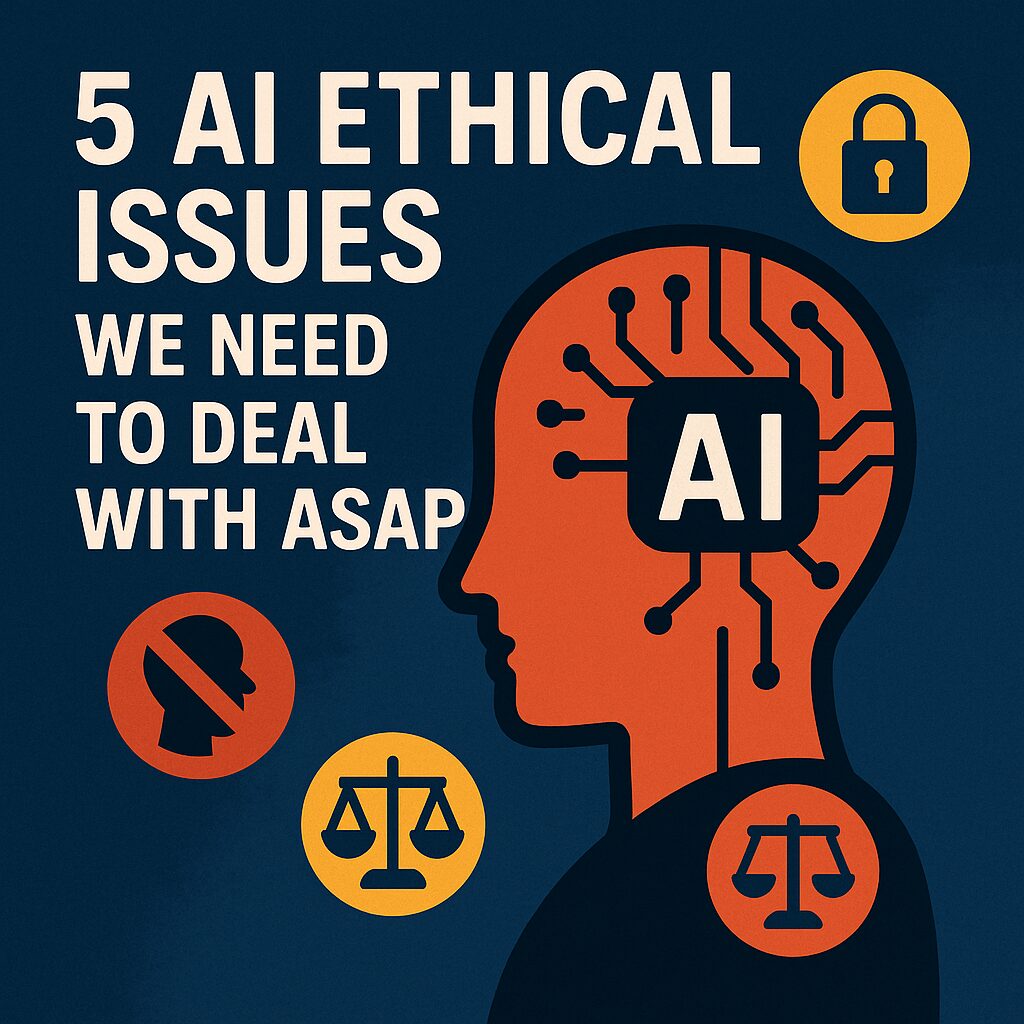
If you’ve worked with generative AI tools in the past year, you’ve likely experienced two things: awe at how fast they work, and unease at how confidently they get things wrong. That tension, between automation and accuracy, scale and control, isn’t just a bug. It’s a signal. One that points to deeper, systemic AI ethical issues.
These issues aren’t new, but they’ve become harder to ignore as AI systems enter mainstream content workflows, UX design, and technical communication. They affect how we write, who we trust, and what we choose to believe.
Let’s break down a few of the most pressing ethical concerns and what they mean for our work as communicators.
1. Bias Is Baked In
Perhaps the most widely discussed ethical issue in AI is algorithmic bias. When a large language model generates biased, stereotypical, or offensive content, it’s not being malicious. It’s mirroring the datasets it was trained on—datasets full of messy, real-world human language and behavior.
As Bender et al. (2021) argue in their foundational paper “On the Dangers of Stochastic Parrots,” large language models often absorb harmful social biases and reproduce them at scale without accountability. When these models are used to generate user-facing content, help guides, chatbots, product recommendations, the results can reinforce stereotypes or exclude entire groups.
Source: Bender, E. M., Gebru, T., McMillan-Major, A., & Shmitchell, S. (2021). On the dangers of stochastic parrots: Can language models be too big? Proceedings of FAccT ’21. https://doi.org/10.1145/3442188.3445922
2. Opacity Undermines Trust
Most AI tools function like black boxes. You input a prompt, get an output, and have little insight into how the decision was made. This lack of transparency raises serious concerns about accountability, especially in high-stakes communication.
Google’s own AI Principles emphasize the importance of explainability and fairness, but these principles are hard to uphold when even developers don’t fully understand how outputs are generated (Google AI, 2018).
As technical communicators, we’re often the ones tasked with explaining complex systems. But when the system itself resists explanation, we’re left guessing, or worse, being misled.
Source: Google AI. (2018). Perspectives on AI: Responsible AI practices. https://ai.google/responsibilities/responsible-ai-practices/
3. Content Without Accountability
When AI writes, who’s the author?
This question isn’t just philosophical—it’s legal, social, and practical. A 2023 article in Harvard Business Review pointed out that as more companies use AI for customer-facing content, users assume a level of authority and credibility that the tools can’t actually provide (Ransbotham et al., 2023). If a chatbot gives you incorrect medical advice or a poorly translated safety warning, who’s responsible?
We need better norms, and clearer workflows, around AI authorship, revision, and approval.
Source: Ransbotham, S., Kiron, D., & LaFountain, B. (2023). How to make AI less toxic. Harvard Business Review. https://hbr.org/2023/03/how-to-make-ai-less-toxic
4. Labor, Displacement, and Exploitation
The push for “efficiency” often hides the human cost of AI. Behind every slick chatbot is a team of low-paid workers labeling data, moderating harmful content, or training models to behave “appropriately.”
A Time magazine investigation exposed how OpenAI outsourced content moderation to workers in Kenya for less than $2/hour (Perrigo, 2023). This raises major questions about the ethics of AI supply chains, especially for organizations that claim to be progressive or inclusive.
Source: Perrigo, B. (2023). Exclusive: OpenAI used Kenyan workers on less than $2 per hour to make ChatGPT less toxic. TIME. https://time.com/6247678/openai-chatgpt-kenya-workers/
5. Erosion of Human Judgment
Finally, there’s the subtle but widespread risk that we over-trust AI, letting it guide decisions, generate content, or make claims without fully vetting them.
A 2024 study by Vincent et al. in Communications of the ACM found that users presented with AI-generated technical documentation were significantly more likely to accept misinformation as accurate, especially when the text was well-formatted and confident in tone.
This puts a new burden on technical communicators: to not only vet our own work, but to help users develop AI literacy so they can evaluate what they’re reading, hearing, and trusting.
Source: Vincent, N., Hecht, B., & Sandvig, C. (2024). The challenge of AI misperception. Communications of the ACM, 67(2), 40–47. https://doi.org/10.1145/3611234
What Can We Do?
These AI ethical issues are not unsolvable—but they can’t be solved by engineers alone.
We need:
- Communicators at the table during development
- Transparent documentation of AI use in public-facing content
- Ethical review processes for AI-generated communication
- Cross-functional efforts to build AI literacy across teams and audiences
Technical communicators are uniquely positioned to lead in these areas. We already know how to make complex systems clear, accessible, and ethical. Now we just need to extend that expertise to AI itself.
